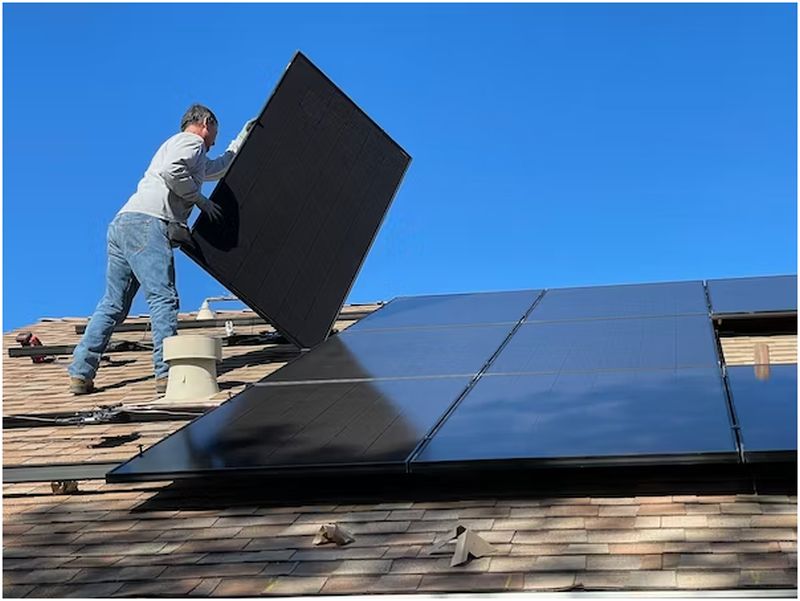The problem of climate change continues to become our priority; even little things we do at home become significant actions. Sustainable living and reducing carbon emissions using alternative energy sources for our home have now become commonplace. Most think that these renewable energy sources aren’t possible within our homes. But thanks to technological advancements, these have become widely accessible.
But what alternative energy sources can you have in your home? Read on.
Alternative Energy Sources to Consider for Your Home
Here are some options available you can explore.
1. Install Solar Power
The installation of solar panels offers several significant advantages. It reduces your reliance on traditional power grids, providing a measure of energy independence. You no longer have to rely solely on conventional energy sources. You can generate your power right in the comfort of your home.
You can install them on your yard or roof system. It’s worth noting that the feasibility of solar power installation depends on several factors. You must consider your location, available roof space, and the sunlight your property receives.
If you live in Newark or nearby areas, consulting with a solar roofing contractor in New Jersey can help determine the suitability.
2. Use Solar Ovens
Solar ovens utilize the sun’s energy to cook food without the need for conventional fuel sources. These ovens capture sunlight, converting it into heat for baking, roasting, or boiling.
Solar ovens offer versatility, with various uses in different settings. They are suitable for use in outdoor activities like camping or backyard gatherings. They provide a sustainable cooking option without firewood or propane stoves. Solar ovens can also be utilized in off-grid or remote locations, contributing to self-sufficiency and resilience in energy supply.
3. Consider Wind Turbines
Installing wind turbines can be a viable alternative energy solution if you live in an area with consistent wind patterns. Wind turbines convert wind energy into electricity, which can power your home or supplement your energy needs. Wind turbines require a minimum average wind speed to generate electricity effectively. Conducting a wind resource assessment or consulting with professionals can help determine the feasibility and potential energy output of wind turbines in your area.
Note that some regions have specific guidelines and restrictions regarding the installation and operation of wind turbines. Understanding these regulations and obtaining necessary approvals is crucial to ensure compliance and a smooth installation process.
4. Start Small-Scale Biomass Systems
Biomass energy utilizes organic materials such as wood pellets, agricultural waste, or dedicated energy crops to generate heat or electricity. Small-scale biomass systems, such as pellet stoves or biomass boilers, can efficiently heat your home while utilizing renewable resources. It’s important to ensure a sustainable and responsible supply of biomass fuel for long-term use.
5. Have Geothermal Heat Pumps
Geothermal heat pumps utilize the natural heat stored in the earth to provide heating, cooling, and hot water for your home. By tapping into the stable temperatures underground, geothermal systems are highly efficient and environmentally friendly. While the upfront installation cost may be higher, geothermal heat pumps offer long-term energy savings and a reduced carbon footprint.
6. Think About Hydropower
Hydroelectric power can be a viable option for homes near a water source. Micro-hydro systems harness the energy of flowing water to generate electricity. By diverting a portion of a stream or river, the water’s energy can turn into a turbine, producing clean and renewable power. However, hydropower is location-dependent and may require permits and considerations for environmental impact.
Key Takeaways
Embracing alternative energy sources for your home isn’t hard. But it requires commitment and dedication to make it happen. After all, it is a significant step toward a cleaner and more sustainable future. Evaluate the options that align with your location, budget, and energy needs, and take part in the transition to clean energy for a better tomorrow.
- Solar power is a popular and accessible alternative energy source.
- Solar ovens have various applications, providing an eco-friendly and efficient cooking solution.
- Wind turbines can harness wind energy to generate electricity, but suitable wind conditions and local regulations should be considered.
- Biomass systems utilize organic materials to generate heat or electricity, offering a renewable energy source.
- Geothermal heat pumps tap into the earth’s natural heat for efficient and sustainable energy solutions.
- Hydropower harnesses flowing water to generate electricity, but feasibility depends on location and environmental considerations.
Article Submitted By Community Writer




